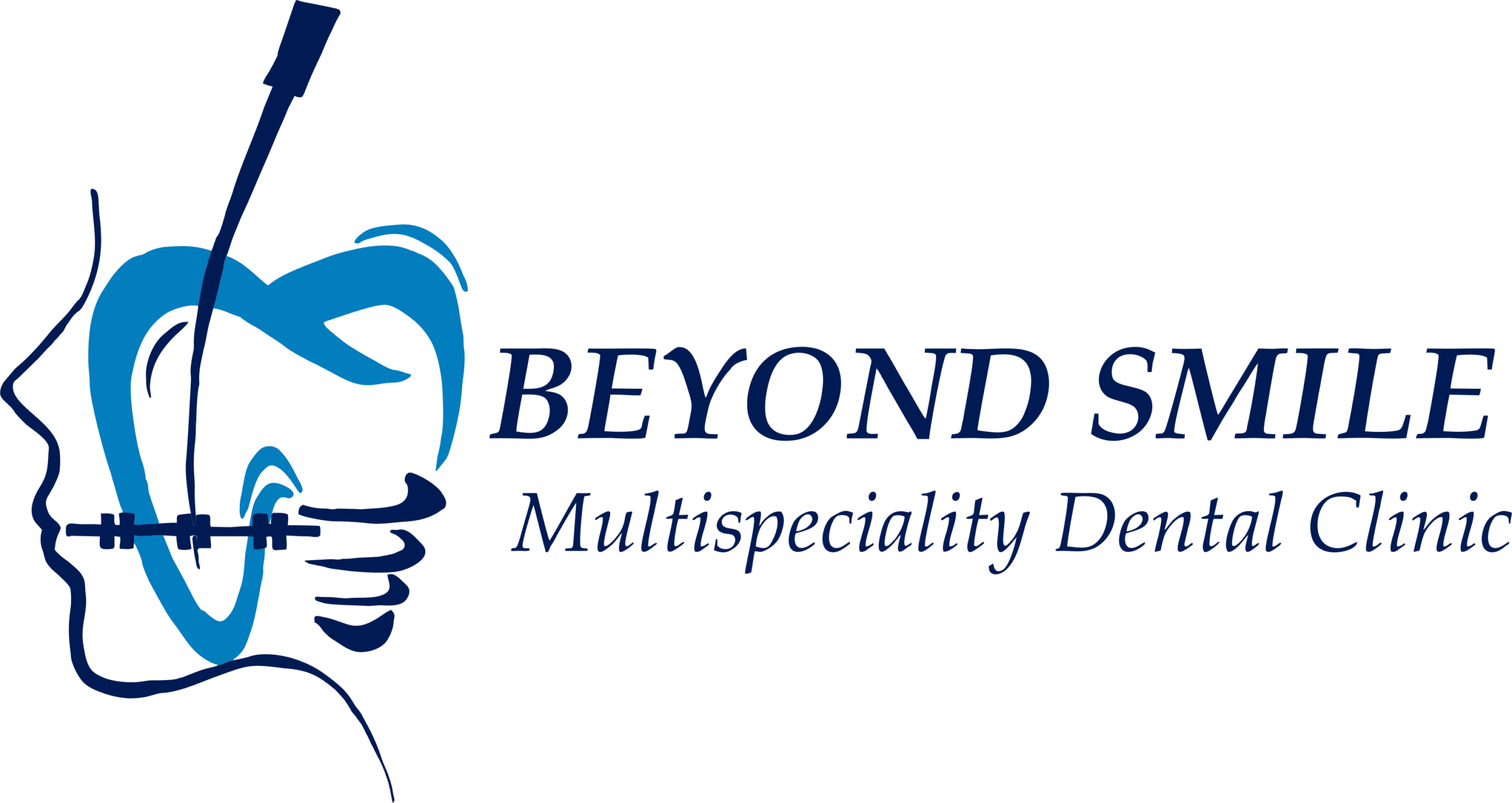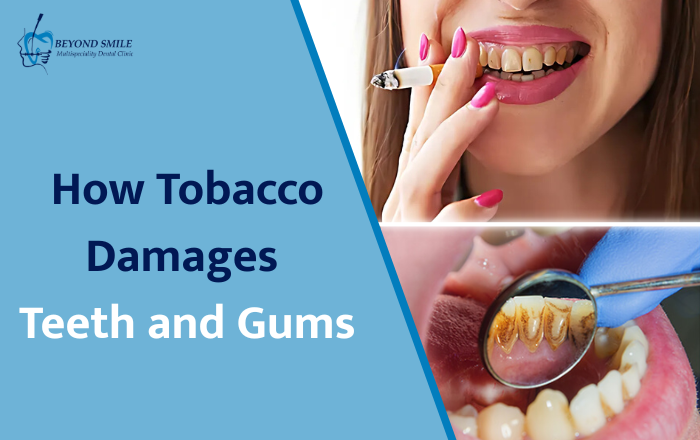You light up a cigarette. Or maybe it’s a quick dip of chewing tobacco after lunch. It feels small, harmless, even comforting. But your mouth has a very different story to tell. Tobacco doesn’t just give you bad breath or yellow teeth — it rewires your mouth’s natural defenses, silently breaking down the bone, tissue, and enamel that keep your smile intact. The scary part? Much of the damage happens quietly, without pain, until it’s too late. Let’s dig into what’s really going on, the signs to watch for, and the changes you can make before things get worse. 1. How Tobacco Harms Your Oral Health Tobacco is more than just smoke or shredded leaves — it’s a toxic cocktail of chemicals. Cigarettes contain over 7,000 chemicals, and smokeless tobacco isn’t far behind. Among them are nicotine, tar, carbon monoxide, ammonia, formaldehyde, and arsenic. These substances interact with your teeth and gums in ways that create a perfect storm for oral problems. 1.1 The Chemicals That Attack Your Mouth Nicotine constricts blood vessels, which means your gums get less oxygen and fewer nutrients. This starves gum tissue and slows healing. Tar and sticky residues cling to tooth surfaces, making plaque harder to remove. Over time, this builds into tartar a rock-hard deposit that traps bacteria right at the gumline. Smoking also reduces saliva flow, leading to a dry mouth. Saliva’s job is to wash away food particles, neutralize acids, and protect enamel. Without enough of it, acids linger and bacteria thrive. 1.2 Smoking and Gum Disease Connection Gum disease starts quietly — mild redness, slight bleeding when brushing. But in tobacco users, it accelerates fast. Why? Because reduced blood flow and weakened immune response make it harder for the body to fight off bacterial infections in the gums. Gingivitis: The early stage, where gums are inflamed but bone is still intact. Tobacco makes this stage easier to reach and harder to reverse. Periodontitis: The advanced stage, where infection damages the bone holding your teeth. Smokers are up to six times more likely to develop severe gum disease than non-smokers, according to the American Dental Association. Once bone is lost, it’s permanent without surgical intervention. 1.3 Tooth Discoloration and Persistent Bad Breath Tobacco stains are different from coffee or tea stains. They’re caused by tar particles embedding deep into enamel pores. No amount of aggressive brushing will remove them — in fact, brushing too hard can wear enamel and make things worse. And then there’s halitosis (bad breath). Tobacco leaves lingering odor in the mouth, lungs, and even the bloodstream. Add to that the bacterial buildup from dry mouth, and you get bad breath that mints or gum can’t cover for long. 1.4 Bone and Tooth Loss Healthy gums and bone hold your teeth in place like anchors. But tobacco-driven gum disease attacks this foundation. As bone breaks down, teeth loosen. Eventually, they may fall out or need extraction. A study published in the Journal of Periodontology found that long-term smokers lose twice as many teeth as non-smokers by age 65. And those who quit still face higher risk for several years afterward — another reason to stop as soon as possible. 2. Smokeless Tobacco: Not a Safer Option Some people switch to chewing tobacco or snuff thinking it’s less harmful than smoking. The reality is different. Placing tobacco against the gums for hours exposes one area to direct chemical assault. The result? Gum recession: The tissue wears away, exposing sensitive tooth roots. Cavities: Many smokeless products contain sugar to improve taste, which feeds decay-causing bacteria. Oral cancer: Prolonged contact with carcinogens greatly increases cancer risk at the exact site where tobacco is placed. According to the World Health Organization, smokeless tobacco users have a 4–6 times greater risk of oral cancer compared to non-users. 3. Long-Term Risks: Beyond Teeth and Gums The damage tobacco does in your mouth can spread far beyond a toothache. Oral Cancer: Smoking and chewing tobacco together are responsible for 90% of oral cancer cases worldwide. The most common sites are the tongue, lips, cheeks, and the floor of the mouth. Delayed Healing: Even after quitting, wounds in tobacco users take longer to heal. This affects everything from recovery after tooth extraction to gum surgery. Masking Symptoms: Because tobacco reduces blood flow, gums may not bleed even when infected. This can hide gum disease until it’s severe. 4. Can the Damage Be Reversed? Stopping tobacco use is the most important first step. While some effects are permanent, others can improve significantly once the chemicals are out of your system. 4.1 What Happens When You Quit Within 20 minutes of quitting smoking, heart rate and blood pressure drop. Within 2 weeks to 3 months, circulation improves — including to your gums. Oral benefits include: Reduced risk of gum disease progression. Better healing after dental treatments. Gradual improvement in breath and taste. 4.2 Dental Treatments for Tobacco Damage Even after quitting, you’ll likely need professional help to restore your smile: Scaling and root planing: Deep cleaning below the gumline to remove bacteria and help gums reattach. Professional whitening: Safely lifts deep-set stains. Restorative work: Fillings, crowns, or implants for damaged or missing teeth. Oral cancer screening: Quick, painless checks for abnormal tissue. 5. Practical Steps to Protect Your Teeth and Gums Quitting is hard, but every positive step you take matters. Ditch tobacco completely — cutting down still leaves your mouth exposed. Brush twice daily and floss once — this is non-negotiable. Use fluoride toothpaste to strengthen enamel. Rinse with antibacterial mouthwash to reduce plaque bacteria. Visit your dentist more often — tobacco users benefit from checkups every 3–4 months. FAQ Q1: Can brushing remove tobacco stains completely? Not usually. Deep stains require professional whitening. Q2: How soon after quitting smoking will my gums heal? Early healing starts within weeks, but the timeline depends on how advanced the gum disease is. Q3: Is vaping better for my teeth than smoking? It avoids tar, but nicotine in vape

